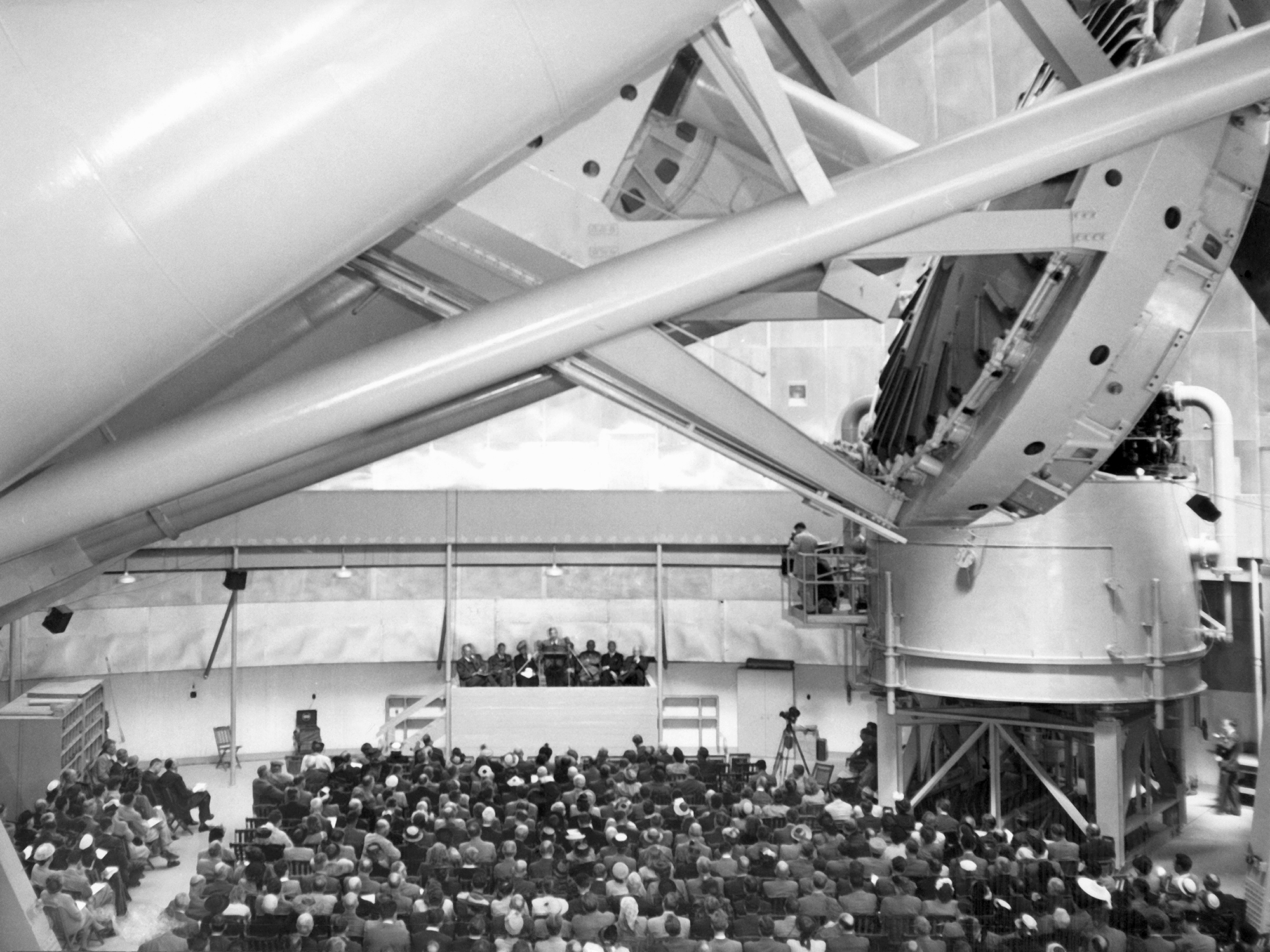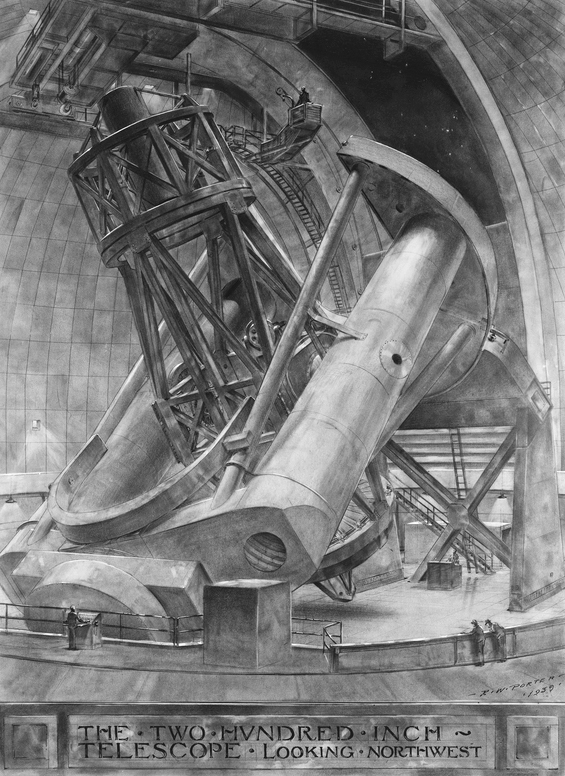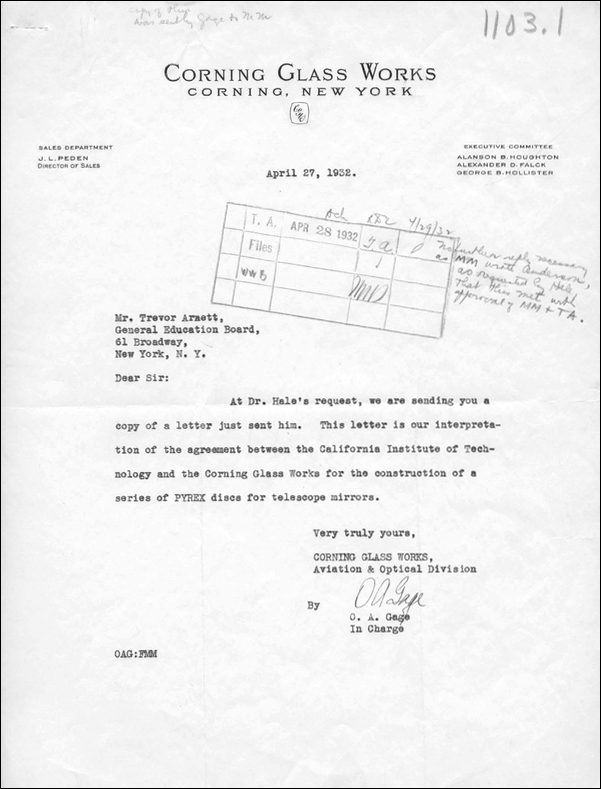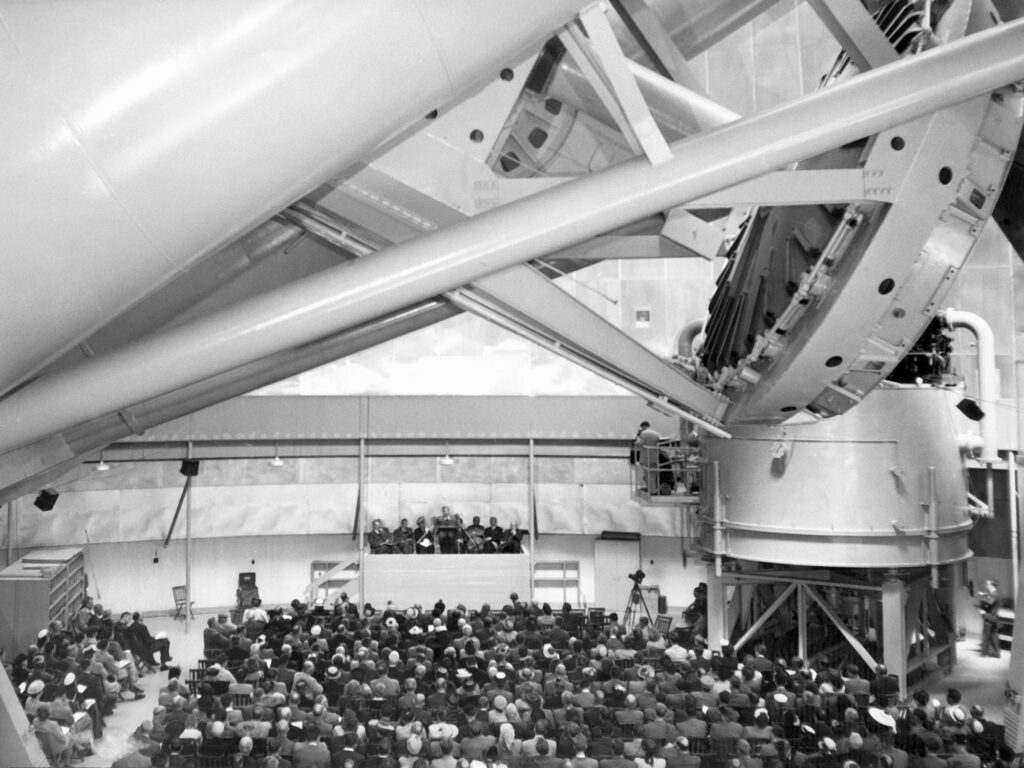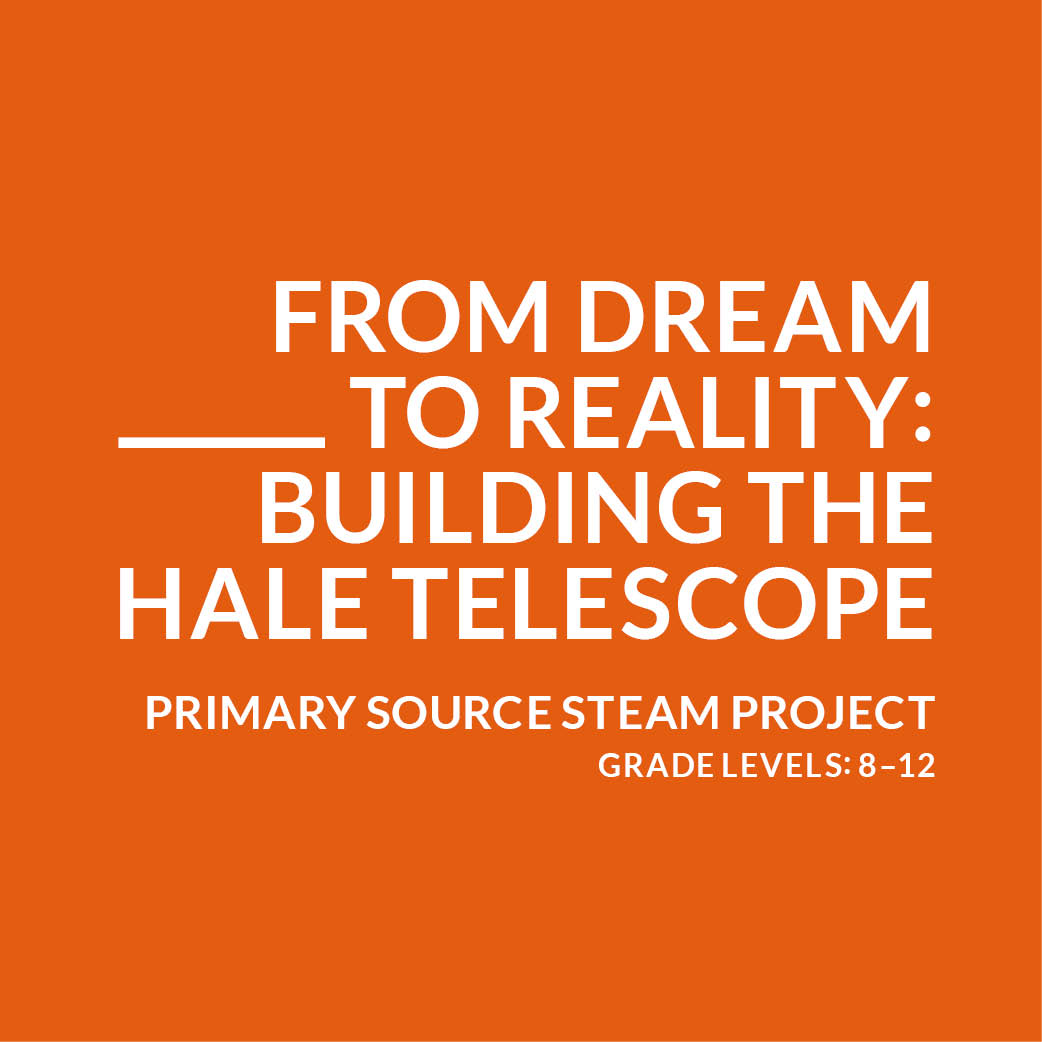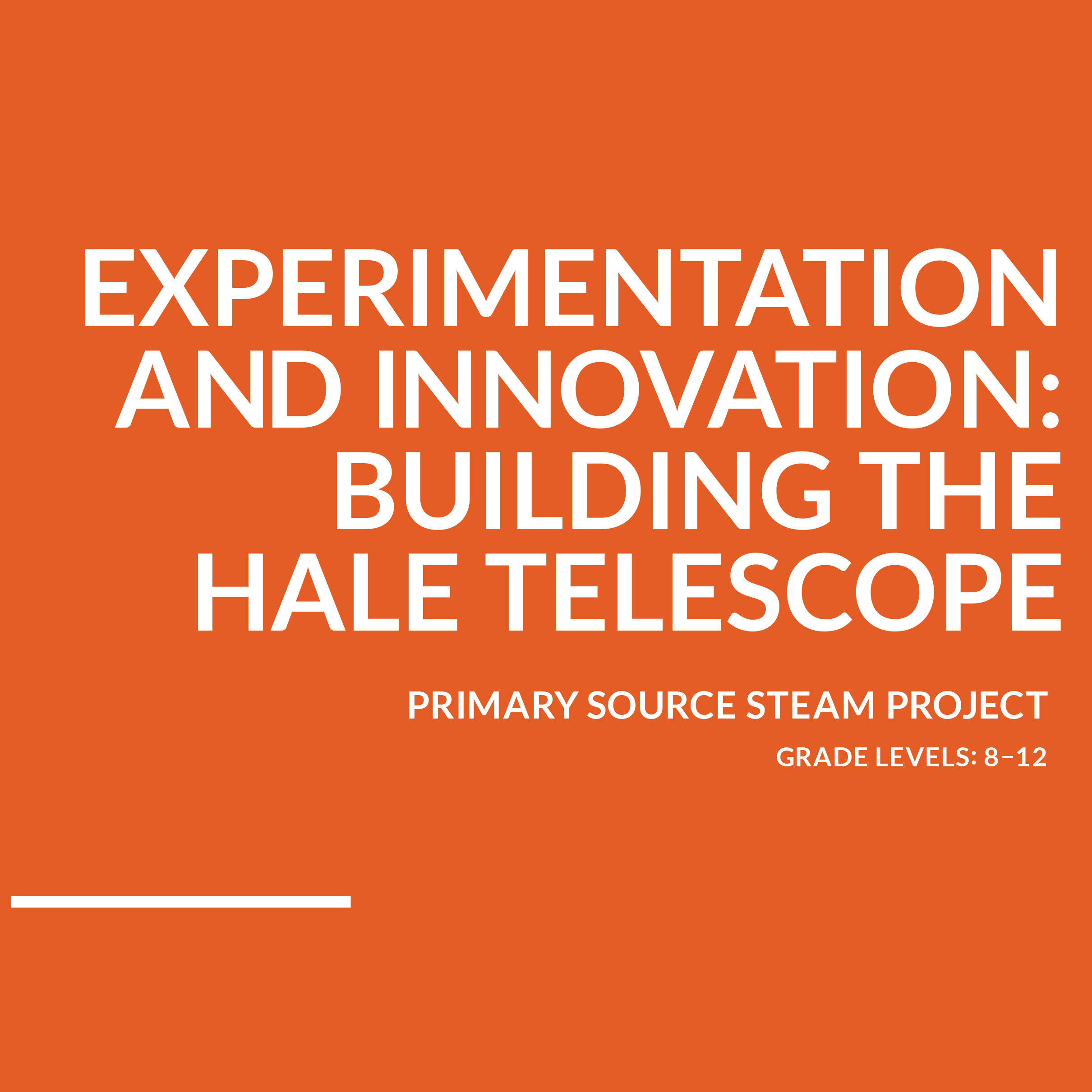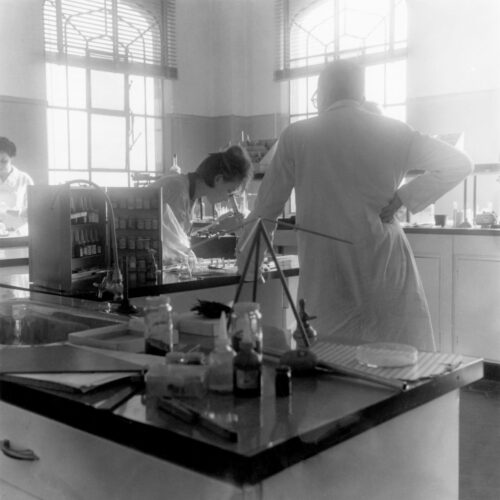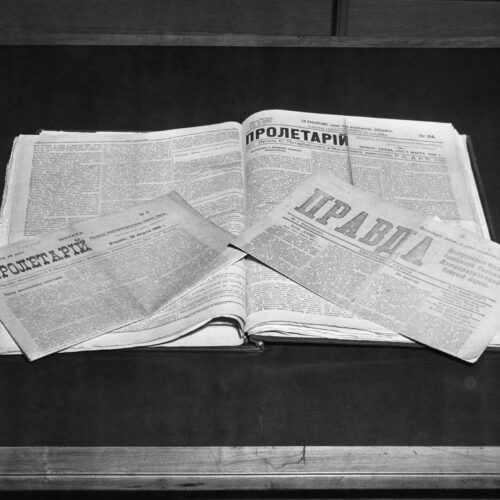Although astronomy never represented a major area of funding for the Rockefeller Foundation, the RF did make major contributions to the field. In fact, one of the largest single grants ever awarded by the Foundation was for an astronomy project: the construction of the enormous telescope on Mt. Palomar, in Southern California. The grant was originally made through the Rockefeller-funded International Education Board (IEB), and the twenty-year-long project was later taken over by the RF when the IEB was closed.
A More Powerful Telescope
With the completion in 1917 of the 100-inch telescope funded and operated by the Carnegie Institution of Washington and located on Mt. Wilson, above Pasadena, California, American astronomy had made an enormous leap.
One of the most important observations made possible by the Mt. Wilson telescope was Edwin Hubble’s demonstration that the “spiral nebulae” long observed from smaller telescopes were not part of the Milky Way but were instead separate, quite distant galaxies. According to the observations at Mt. Wilson, these galaxies seemed to be moving away from one another. To confirm this observation about an expanding universe and to learn more about the nature and distribution of the distant galaxies, a more powerful telescope was necessary.
By the mid-1920’s, the concept of a larger telescope was under discussion, and in 1928, George Ellery Hale, the former director of the Mt. Wilson Observatory, approached the International Education Board about the possibility of Rockefeller funding for a 200-inch telescope that would have four times the power of the largest telescope on Mt. Wilson. In addition to enumerating the discoveries that the new telescope would make possible, Hale offered convincing arguments concerning the possibility of constructing and mounting such a large mirror. Even given the enormous amount of funding needed for this venture and the uncertainties involved in casting a 200-inch mirror, the IEB approved the grant request with remarkably little discussion in the fall of 1928 and awarded the California Institute of Technology (Caltech) $6 million for the project.
Unfortunately, things did not go as smoothly as Hale and the IEB had hoped. After years of work and the expenditure of over $600,000, Hale’s initial plan to construct the 200-inch mirror out of fused quartz proved to be unfeasible (regular glass could not be used because such a large glass mirror would be too susceptible to temperature changes). Eventually, the Corning Glass Works in New York solved the problem by casting the mirror with a new form of Pyrex glass in 1934. Designing the mounting for the huge mirror also proved to be much more complex than the initial proposal had indicated.
The Southern Sky
These problems, however, did not discourage the Foundation from additional support for telescope projects during this period. One of the major issues facing the field of astronomy at this time was that knowledge of the sky visible from the Southern Hemisphere lagged significantly behind that of the Northern Hemisphere, where most large research telescopes were located. Rockefeller Foundation grants to the University of Leiden and to Harvard University provided support for the construction and maintenance of 60-inch telescopes in South Africa.
Finishing the Telescope
Meanwhile, work continued on the Mt. Palomar telescope throughout the 1930’s. The observatory building and the mounting design for the mirror were largely completed by 1936, and the mirror was shipped to Pasadena on a special, slow-moving train that took sixteen days to cross the country. Grinding and polishing of the mirror began at once in a laboratory at Caltech, but after several years, polishing was still not complete. Work came to a halt during World War II and completing the project after the war required the Foundation to make two additional grants totaling $500,000.
The final polishing of the telescope’s mirror was not finished until 1947. As the Caltech Trustees noted at the dedication of the telescope in June of 1948,
It would have been appropriate for the observatory to be called the Rockefeller Observatory except that the Rockefeller Boards have adopted a policy against the use of their founder’s name in this way.
Dedication, June 3, 1948Dedication booklet, “Palomar, June 3, 1948,” p. 1
George Ellery Hale, who had done so much to initiate and guide the project, had passed away ten years before the dedication ceremony. In the end, the telescope was named in his honor.
Research This Topic in the Archives
Explore this topic by viewing records, many of which are digitized, through our online archival discovery system.
- “California Institute of Technology – Observatory,” 1926-1931. International Education Board records, Appropriations, Series 1, Numerical, Subseries 1, Rockefeller Archive Center.
- “California Institute of Technology – Observatory,” 1932-1934. General Education Board records, Appropriations, Series 1, Northern and Western Appropriations, Subseries 1.4, Rockefeller Archive Center.
- “California Institute of Technology – Observatory,” 1932-1934. General Education Board records, Appropriations, Series 1, Northern and Western Appropriations, Subseries 1.4, Rockefeller Archive Center.
- “California Institute of Technology – Observatory,” 1935-1958. General Education Board records, Appropriations, Series 1, Northern and Western Appropriations, Subseries 1.4, Rockefeller Archive Center.
- “California Institute of Technology – Observatory,” 1926-1931. International Education Board Records, Appropriations, Series 1, Numerical, Subseries 1, Rockefeller Archive Center.
The Rockefeller Archive Center originally published this content in 2013 as part of an online exhibit called 100 Years: The Rockefeller Foundation (later retitled The Rockefeller Foundation. A Digital History). It was migrated to its current home on RE:source in 2022.
